INTRODUCTION
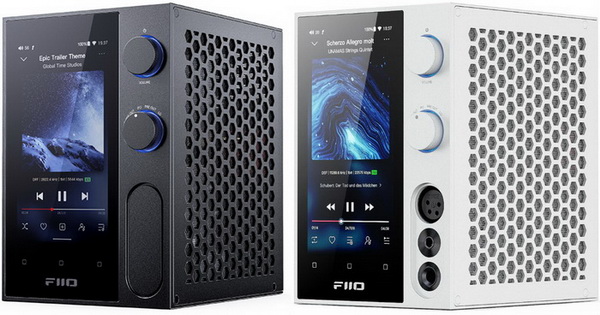
High quality audio has always been a priority for me, first when building a piece by piece Technics stereo (consisted by an amplifier, digital sound processor, FM/AM tuner, dual cassette deck, turntable and a CD player) back in the mid-90's and then both with my PCs (Creative Sound Blaster sound cards with 5/7.1 surround sound speakers) and even my cars (mostly sources by Pioneer and speakers by Focal and Klipsch). Now, i have to admit that time does take its toll on people and so lately i haven't been as enthusiastic about audio as in the past, especially home audio (home cinema excluded). Still this industry never fails to surprise me and thanks to the latest R7 All-In-One Desktop Android HiFi Music Player by FiiO home audio might just be a thing again for me.
FIIO was established in 2007 and has experience in researching and developing countless portable music products of different types, and sell FIIO-branded products through sales agents worldwide. The brand name FIIO is composed of Fi (fidelity from HiFi) and iO (number 1&0), representing the real feeling and convenient life that digital brings to life. Meanwhile, the Chinese “飞傲” is the transliteration of FIIO, indicating the positive and innovative spirit as thriving as spring. FIIO is focused on product quality, adheres strictly to ISO9001 standards in quality management and works hard to attain the lowest repair-related product returns rate.
FiiO has long wanted to release an all-in-one HiFi audio device which could be used as a local streamer, DAC, balanced headphone amplifier (3.6W in this case), DAP and transmitter and well, the Roon Ready R7 is just that. The R7 is currently available in black and white colors, runs on Android10 and is based on the octa-core Snapdragon 660 mobile platform (Kryo 260 CPU, Adreno 512 GPU and Hexagon 680 DSP) by Qualcomm together with 4GB DDR LPDDR4 and 64GB of internal storage (around 46GB available). On the audio end FiiO has paired the SABRE ES9068ΑS DAC (32-bit 2ch with 126dB DNR, -120dB THD+N / supports up to 32-bit 384kHz PCM, 96kHz S/PDIF and DSD256, DSD512 and DSD1024) together with two THX AAA 788+ headphone amplifiers (3650mW maximum output at 32 ohms) and two femtosecond crystal oscillators. Other features include an 4.97" LCD color touchscreen (720x1280), Bluetooth 5.0 wireless connectivity (SBC/AAC/aptX/aptX HD/LDAC/LHDC codec support), WiFi 2.5G/5G (DLNA, AirPlay and Google Cast are supported), front RGB LED rings and an SD card slot (up to 2TB capacity cards supported). As for connectivity the FiiO R7 sports an RJ45 Ethernet port (100M), 6.35mm port, 4.4mm balanced out port, four-pin XLR balanced out ports (L/F), two stereo RCA outputs, optical S/PDIF input/output, coaxial input/output, USB-A host port and a USB-C port (DP mode). Strangely enough even though FiiO also has a remote control available for the R7 (RM3 model) for unknown reasons (can't believe this is due to cost) it's not included in the bundle.
SPECIFICATIONS AND FEATURES

PACKAGING AND CONTENTS
FiiO uses a black box the front of which just has their logo, Hi-Res logos, product picture and the product name.
A quick product description along with the genuine query barcode and several certifications are printed at the rear.
Packaging is very good with the R7 placed between two thick pieces of foam.
Along with the R7 and its power cord FiiO also bundles two rubber bases (flat/angled) with their how to attach instructions, 4 double sided pieces of tape, dust-proof plug, USB-C cable, replacement fuse, 6.35mm adapter, warranty card and the quick start guide.
THE R7
Measuring 160mm in height, 134mm in length and 110 in width the 1282g R7 (made out of aluminum) is not particularly small.
Here you can see how it compares to the M11S (different models with different usages but they do share some characteristics).
Both sides of the R7 are perforated to allow hot air to exit the interior.
At the front we find the 4.97" color LCD touchscreen together with the on/off/volume and output knobs (LED RGB rings are around the dials and represent the sampling rate - blue for lossy, cyan for SD, Yellow for HiRes, Green for DSD and Magenta for MQA - and the type of bluetooth code - blue for SBC, cyan for AAC, yellow for aptX-HD, white for LDAC and orange for LHDC) and 3 headphone inputs behind a removable cover (6.35mm/4.4mm balanced/XLR balanced).
Moving at the rear of the R7 we find the SD card slot (with the SD to microSD card already mounted), USB-C port, USB-A host port, two RCA line outputs, a balanced line output (left/right), RJ45 LAN port, two optical S/PDIF inputs, two coaxial inputs, DC power in with AC/DC power switch, on/off power switch and the power port with the fuse compartment right over it.
Since FiiO bundles two bases with the R7 there are no feet on its base.
The two rubber bases allow you to choose between flat and angled position.
I do find the angled position to be easier to use (especially with the touchscreen).
When paired with the SP3 speakers again by FiiO the R7 produces very good audio results.
Needless to say, the 4.97" LCD display is almost identical to that of the M11S so whenever you use the R7 details will show on it.
R7 OS
Since the R7 uses the Android10 OS its menus are almost identical to those of the M11S.
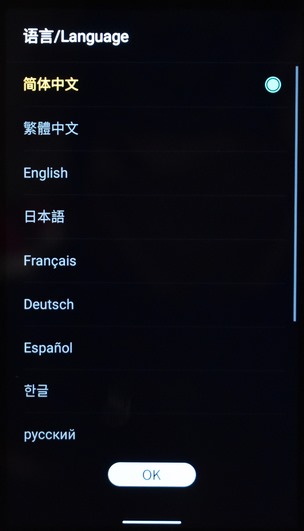
You will need to choose a language once you boot up the R7 for the 1st time (the selection is quite large).
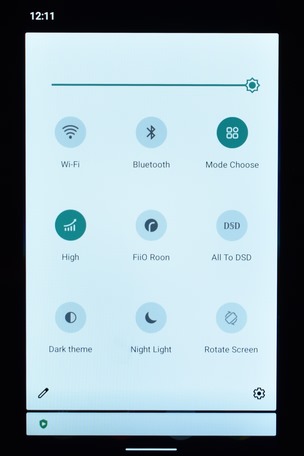
So once again from the drop down menu you can set the screen brightness, enable/disable Wi-Fi and Bluetooth, change the mode, set the gain and output mode, enable in-vehicle mode, enable FiiO Roon and all to DSD functions, switch between dark/light themes, enable night light and rotate the screen.

There's also a graphical mode changer if you don't want to use the drop-down function.
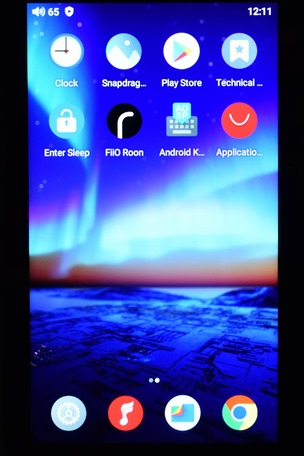
HD quality (720x1280p) may not be great but the display is clear and with vibrant colors.

The graphics when increasing and decreasing the volume are quite different than expected (in a good way).


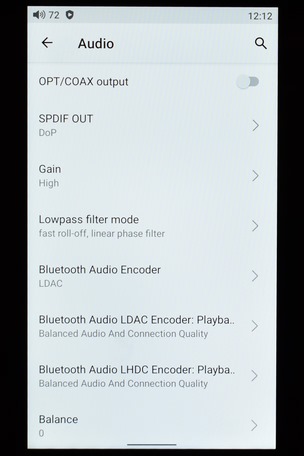


Inside the settings you'll find most of things available in Android smartphones plus the more advanced audio settings.
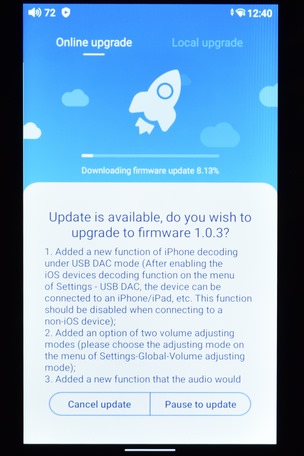
Via the tech support app, you can update the firmware of the R7 (1.0.3 used for my tests).

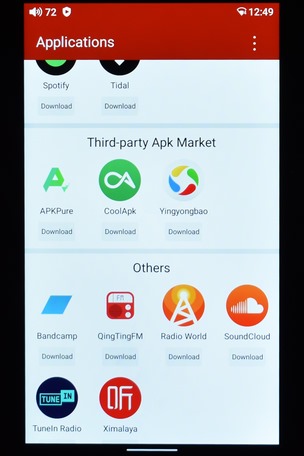
Even though you can log into Google Play Store to download apps FiiO has made a total of 25 apps freely available.
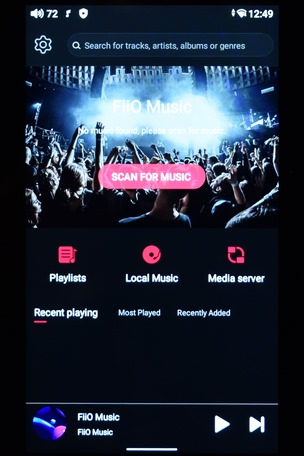
The Pure Music mode is what everyone will be using and it's very easy to navigate.
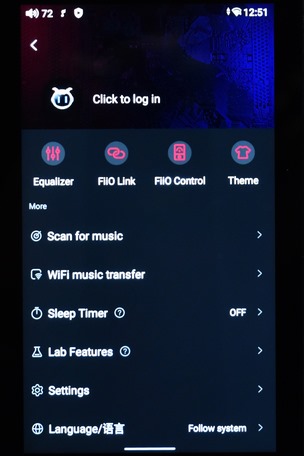
From the main Pure Music tab, you can use the EQ function, change the theme, use the FiiO link and control features, scan for music (local/microSD), initiate WiFi music transfer, set the sleep timer, check various beta features (Lab), enter the settings tab and change the language.
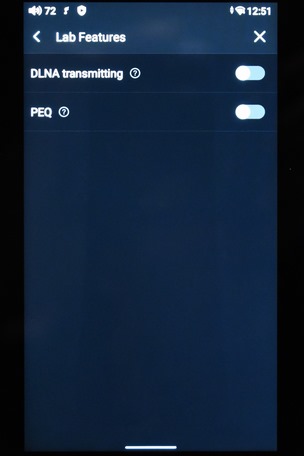
DLNA transmitting and PEQ are the two features inside the Lab area.

The EQ comes ready with several presets for you to choose from or create your very own.
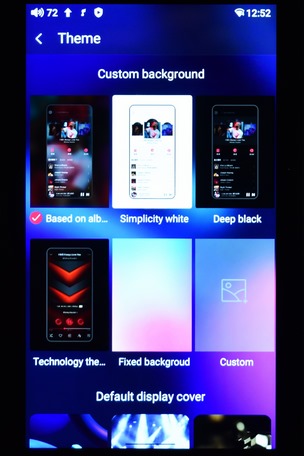
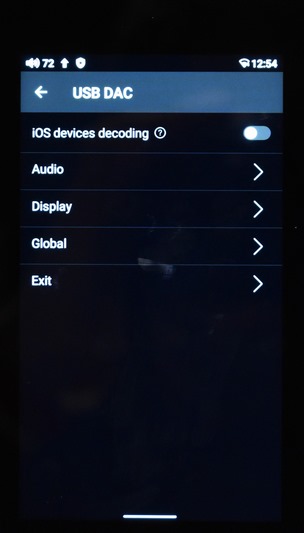
You can also change the graphic theme of the R7 and of course use it as a USB DAC.
CONCLUSION
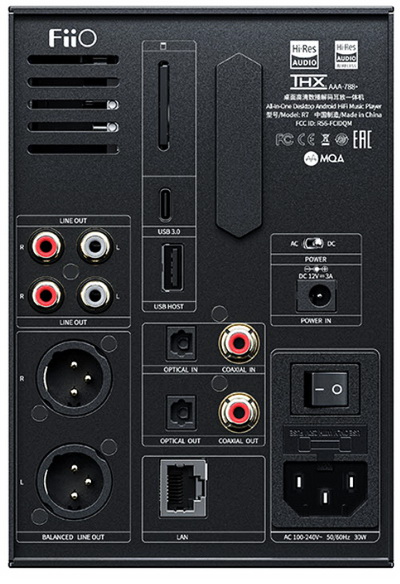
The sole thing that went through my mind when I first saw the R7 during its initial unveiling early this year was just how unique it looked compared to models from the competition and just how similar it looked to all the music players released by FiiO. So basically, if looks matter to you then you can’t do better than the R7 (other than perhaps the R9 which is due to be released in a few days). Build quality is also very high although I have to admit that I was a bit puzzled by how uneven the rear optical S/PDIF ports were (doesn’t affect the player in any way but looks do matter and that did look strange to me). In regards to audio quality the R7 produces clear and crisp mids and highs and as for bass levels even though they could feel “warmer” they are very strong. Worth pointing out that its audio performance comes very close to the M11S (on the upper side) but as expected not so much to that of the M15, especially not in terms of soundstage (not quite as wide and deep). Also, worth pointing out is that the R7 is primarily a music focused solution and so when compared to the Sound Blaster AE9 which i use daily there are some differences, not just in regards to spatial awareness but also emphasis in highly detailed effects like bullets flying around and even explosions. The touch screen behaves the same exact way as every other touch screen used on a music player by FiiO so nothing new here (just remember, the angled base works best with the display).
Currently retailing for USD719.99 inside the USA (Amazon.com) and for 728.36Euros inside the EU (Amazon.de) the R7 All-In-One Desktop Android HiFi Music Player by FiiO is priced as expected. At the end of the day i really have nothing bad to say about the R7, quite the contrary. Audio performance is very good, it looks like nothing else in the market today, comes with a plethora or outputs and features and well, it’s even available in black and white colors. Yes, it’s not perfect and the release of its higher-end brother the R9 might overshadow it but overall, it delivers as advertised and for that it deserves the Golden Award.

PROS
- Build Quality
- Impressive Audio Performance
- Supported Bluetooth Codecs (SBC/AAC/aptX/aptX HD/LDAC/LHDC)
- 4.97” Touchscreen
- Octa Core Qualcomm Snapdragon 660
- 4GB LPDDR4 RAM
- Available Outputs
- Bluetooth 5.0 & WiFi 2.4G/5G
- SD Card Slot (Up To 2TB)
- 64GB Onboard Storage (46GB Available)
- Supported Audio Formats (DSD/ISO/DSF/DFF/DST/DXD/APE/Apple Lossless/AIFF/FLAC/WAV/WMA/MP3/OGG/AAC)
- Customized Android v10.0 OS
- ARGB LED Rings
- Flat & Angled Rubber Bases
- Available In Black And White Colors
- Product Support
CONS
- Price (For Some)
- Optical S/PDIF Ports (Uneven)
- Remote Control (Not Bundled)

 O-Sense
O-Sense





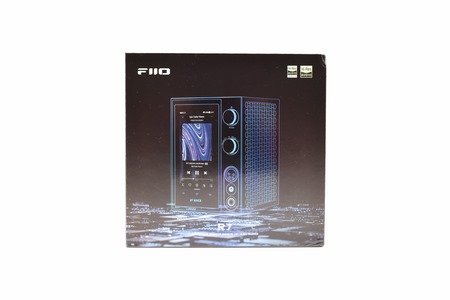

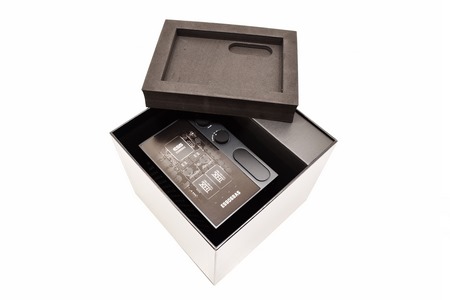
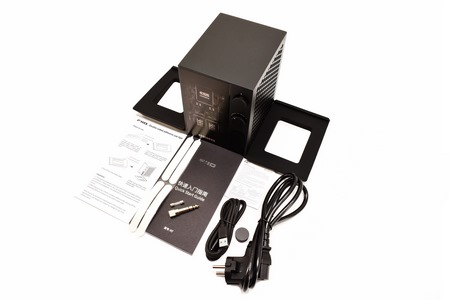


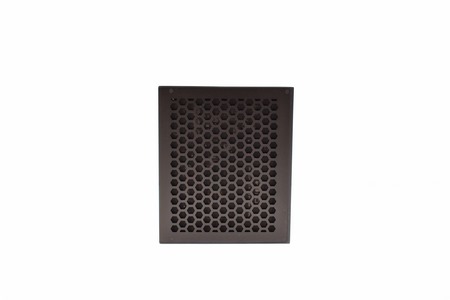







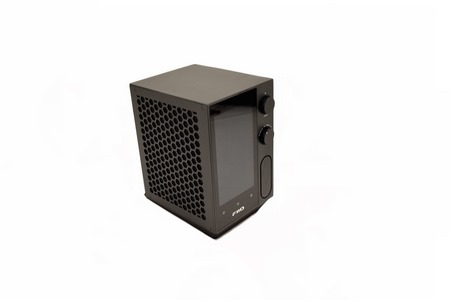
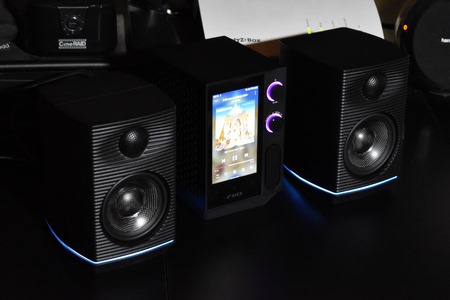
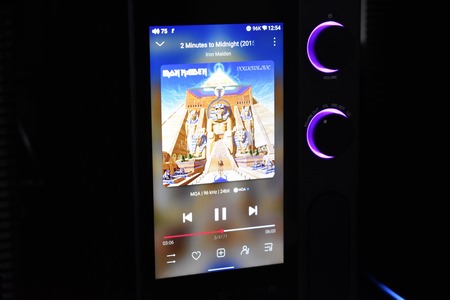


.png)

